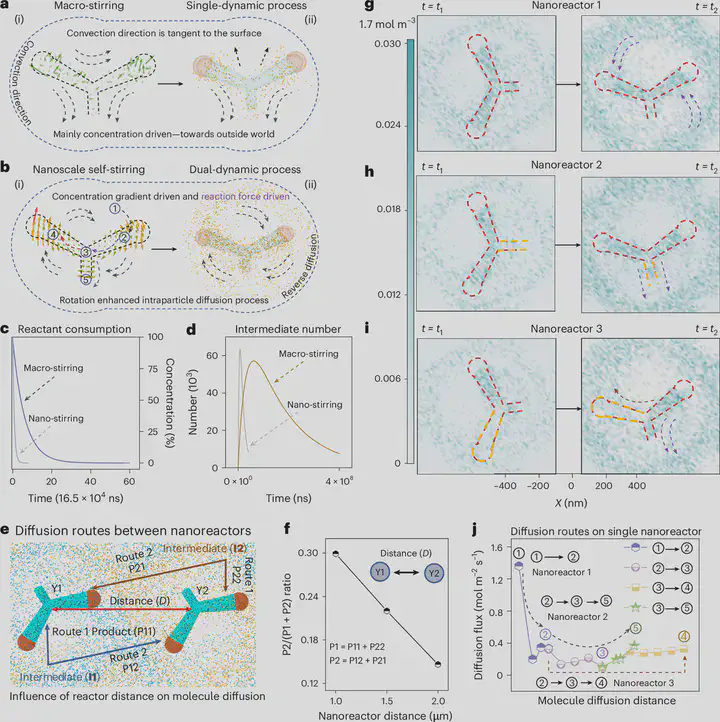Paddle-like self-stirring nanoreactors with multi-chambered mesoporous branches for enhanced dual-dynamic cascade reactions

摘要
Developing artificial nanomaterial systems that can convert external stimuli to achieve nanoscale self-sustainable motion (for example, self-rotation), and simultaneously integrate and deploy the spatial localization of multiple active sites to unravel the intraparticle diffusion patterns of molecules, is of great importance for green synthetic chemistry. Here we show a paddle-like self-stirring mesoporous silica nanoreactor system with separated chambers and controllable proximity of active sites. The nanoreactors are designed by encapsulating magnetic Fe3O4 (~20 nm) in the first chamber, and meantime, Au and Pd nanocrystals are spatially isolated in different domains. Such a nanoreactor generates nanoscale rotation under the rotating magnetic fields and exhibits an order of magnitude activity enhancement in the cascade synthesis of 5,6-dimethylphenanthridinium (96.4% selectivity) compared with conventional macro-stirring. Meanwhile, we quantitatively uncovered the rotation-induced enhancement in sequential and reverse transfer of reactive intermediates, consequently revealing the relevance of self-rotation and proximity effects in controlling the catalytic performance.